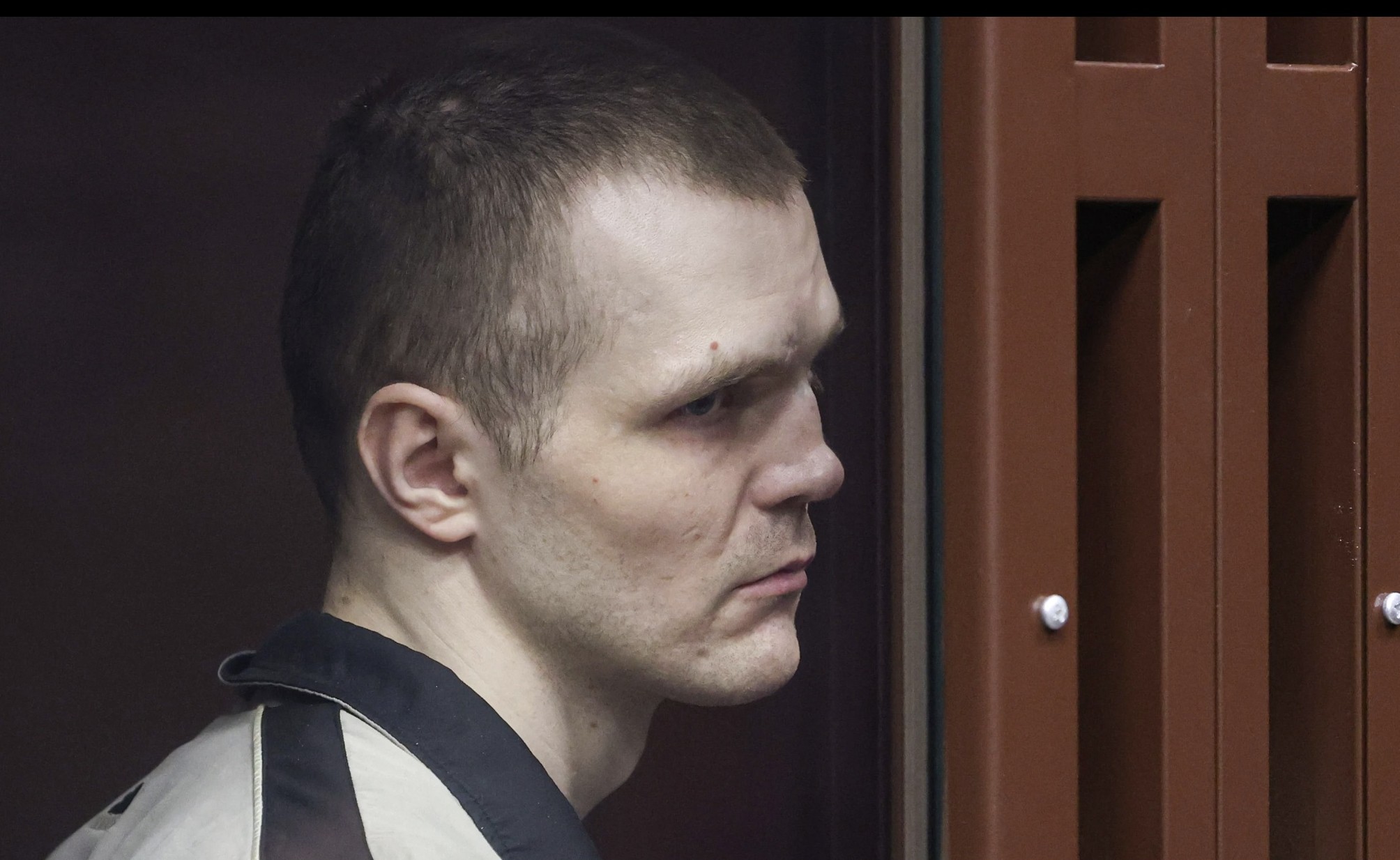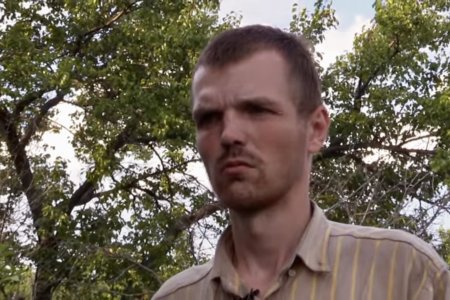
The Southern District Military Court in Rostov has sentenced 33-year-old Hryhory Sinchenko to 26 years’ imprisonment on profoundly illegal charges brought nine years after Hryhory was first seized in occupied Donetsk. The young man almost died as a result of the savage torture he endured in Russia’s proxy ‘Donetsk people’s republic’ [‘DPR’] and it is clear that he has since been beaten and tortured in a Russian SIZO [remand prison], including to force him to reject his independent lawyer.
It is telling that the original ‘case’ against Sinchenko was initiated in November 2019 under one article of the so-called ‘DPR criminal code’. At that stage, Russia was still maintaining its pretence that there was a ‘civil war’ in Ukraine, that ‘DPR’ was an autonomous ‘separatist republic’ and not a proxy formation, totally under Russia’s control. It was only on the eve of Russia’s full-scale invasion of Ukraine that Russian leader Vladimir Putin even formally ‘recognized’ ‘DPR’. It has since openly annexed all territory in Donetsk oblast under its occupation, with the title ‘Donetsk people’s republic’ retained for appearances.
It is especially incriminating, given the above, that the ‘case’ against Hryhory Sinchenko has been expanded to include a record 47 charges under Russia’s criminal code. These include ‘spying’ for Ukraine’s Security Service [SBU]; 15 episodes where Sinchenko was accused of illegal possession of arms and explosions; 12 of preparing explosives; six charges of ‘sabotage’ and one of attempted sabotage; and three of attempts on the life of enforcement officers.
Such a massive increase in charges from that originally laid in 2019, it should be stressed, took place while Sinchenko has been held imprisoned, either in occupied Donetsk oblast, or in Russia, in particular the Taganrog SIZO, which is notorious for its especially savage torture and ill-treatment of Ukrainian civilian prisoners and prisoners of war.
Sinchenko himself admits one charge – of having escaped imprisonment. He has consistently stated that all ‘confessions’ to these other charges were extracted through torture. In fact, the evidence that Hryhory has been subjected to brutal beatings and torture can be seen from his face in the few videos or photographs seen since he came under Russian-controlled or Russian imprisonment.
One of the reasons for such a vast array of charges is probably the attempt to present Sinchenko as a ‘criminal’. He was, instead, a committed Ukrainian patriot and partisan, who had returned to occupied Donetsk oblast after his first seizure by the militants in 2016 and release in a prisoner exchange at the end of 2017.
Hryhory Sinchenko is from occupied Makiivka, near Donetsk. He had been living in Kherson but returned to occupied Donetsk oblast (the so-called ‘DPR’) in 2016 to reinstate medical records needed to confirm his disability status.
In Makiivka, he became involved in a Ukrainian partisan group and was seized by the so-called ‘DPR ministry of state security’, on 2 December 2016. He was accused of blowing up cigarette kiosks, and was savagely tortured., with this including the use of electric shocks; asphyxiation and beatings, as well as being suspended for several hours by handcuffs. According to his mother, Tetiana Hulevska, Hryhory was so savagely beaten that he suffered a collapsed lung and almost died.
Sinchenko was released in the major exchange of prisoners on 27 December 2017 and returned to government-controlled Ukraine. His mother explains that her son was driven by a sense of justice and returned to ‘DPR’.
He was seized again on 31 October 2019, with the ‘DPR’ militants bringing him, covered in blood, to his grandmother’s home. Unlike the first ‘search’ in 2016, when the militants simply plundered the place, taking away even appliances, in 2019, they claimed to be looking for explosives. None were found.
Sinchenko was accused of involvement in the blowing up of a Donetsk radio tower, providing mobile communications to occupied territory, on 27 October 2019. As reported, this was clearly an act by partisans, with a video of the blast posted on YouTube, together with an ultimatum, reading: “This was done in order to draw attention to the inhuman torture in MGB [‘DPR ministry of state security’’ basements. Brutal treatment and having ones extremities connected to electric wires have become the norm in the “people’s” republics. The people of Donbas must come out in protest against torture. Otherwise the fascist republic will remain without communications.”
Nothing more was heard about Sinchenko’s imprisonment until a ‘DPR wanted notice’ appeared on 21 May 2020. This said nothing about the young man having been imprisoned and claimed that he was wanted “for a grave crime”, offering a reward for information leading to his capture. The photo had clearly been taken while he was in custody, and he had obviously been beaten, and probably tortured with electric shocks to his face. He was recaptured on 20 June 2020.
In September 2020, Sinchenko ended up in a prison hospital in occupied Donetsk. He had tried to slash his wrists in protest at torture aimed at getting him to give up his lawyer, and to extract false ‘confessions’.
The ‘case’ against Sinchenko, under Russian legislation, was passed in April 2023 to the Southern District Military Court, which has been churning out politically motivated sentences against Ukrainians since 2014. The indictment then, and reports in the Russian media, all tried to add a criminal element, of alleged ‘extortion’. This was based, seemingly, on the accusation of involvement in explosions to four cigarette kiosks in occupied Donetsk in late 2018. Mediazona notes that Ukrainian media reported these explosions, pointing out that they had taken place at night, during strict curfew hours, and suggesting that they were likely to be the work of ‘DPR militants’.
Sinchenko was also accused of blowing up the above-mentioned radio tower, as well as carrying out explosions on electricity lines, the foundations of a railway bridge and several cars belonging to ‘DPR enforcement officers’. He was not accused of actually killing anybody, with the allegations based on the supposed ‘testimony’ of ‘DPR enforcement officers’ and an owner of one of the kiosks.
There were a number of ‘hearings’ before Sinchenko was moved to the Taganrog SIZO in August 2024. While the feared new charge of ‘international terrorism’ did not eventuate, the move was also clearly aimed at isolating Sinchenko and getting rid of his independent lawyer. The latter arrived at the SIZO, only to be told that Sinchenko had ‘rejected his services’. During a court hearing on 26 August 2024, the same lawyer was only able to speak to Sinchenko for a moment by video link from the SIZO. He asked why Sinchenko’s face looked battered. The Ukrainian replied that he was being beaten by the SIZO staff, at which point, the connection was cut.
After the sentence on 19 March, Mediazona reported that since last year, Sinchenko’s has had a different lawyer, Oleg Ivashchenko. The latter did not wish to discuss the case with the journalists. The prosecution clearly succeeded in getting rid of the previous lawyer, Nikita Buklov, with the latter willing to tell Mediazona only that “there were reasons” why he had left the case.
The ‘trial’ was before a panel of three Russian ‘judges’, under presiding ‘judge’ Viacheslav Alekseevich Korsakov. The latter has already been involved in the persecution and long sentences against Crimean Tatar and other Ukrainian political prisoners. The sentence announced on 19 March was to one year less than that demanded by the Russian prosecutor, namely 26 years’ maximum security imprisonment, with the first five years in a prison, the worst of Russian penal institutions. Hryhory, who has been in Russian captivity since 2019, was also fined 200 thousand roubles. It is unclear whether Russia is even admitting how long he has been imprisoned, with any such imprisonment, if acknowledged, being counted against the term of imprisonment imposed.
The sentence is not, at least officially, final, and Sinchenko will, almost certainly, appeal. There is, effectively, no likelihood of any Russian court passing a just sentence and freeing Sinchenko. It is, therefore, vital that his story receives maximum publicity, in order to ensure his release in an exchange of prisoners.
Please help with publicity if you can! You can also show Hryhory – and Moscow – that he is not forgotten by writing to him in the Taganrog SIZO. Letters have to be in Russian and handwritten. Please do not write about Hryhory’s case or on any ‘dangerous’ subject (i.e. Russia’s war of aggression, persecution or politics). If this is a problem, please just copy out the sample letter below, perhaps also enclosing a picture or photo.
Sample
Привет,
Желаю Вам крепкого здоровья и надеюсь, Вы скоро вернетесь домой, к своим родным. Простите, что мало пишу – мне трудно писать по-русски, но мы все о Вас помним.
[Hi. I wish you good health and hope that you will soon be home, with your family. I’m sorry that this letter is short – it’s hard for me to write in Russian., but you are not forgotten. ]
Address (this can be in Russian or English, with Hryhory’s year of birth needed).
347910, РФ, Ростовская область, г. Таганрог, ул. Ленина, д. 175, ФКУ СИЗО-2
Синченко Григорию Андреевичу, 1991 г. р.
347910 Russian Federation, Rostov oblast, Taganrog, 175 Lenin St, SIZO-2,
Sinchenko, Grigory Andreevich, b. 1991


